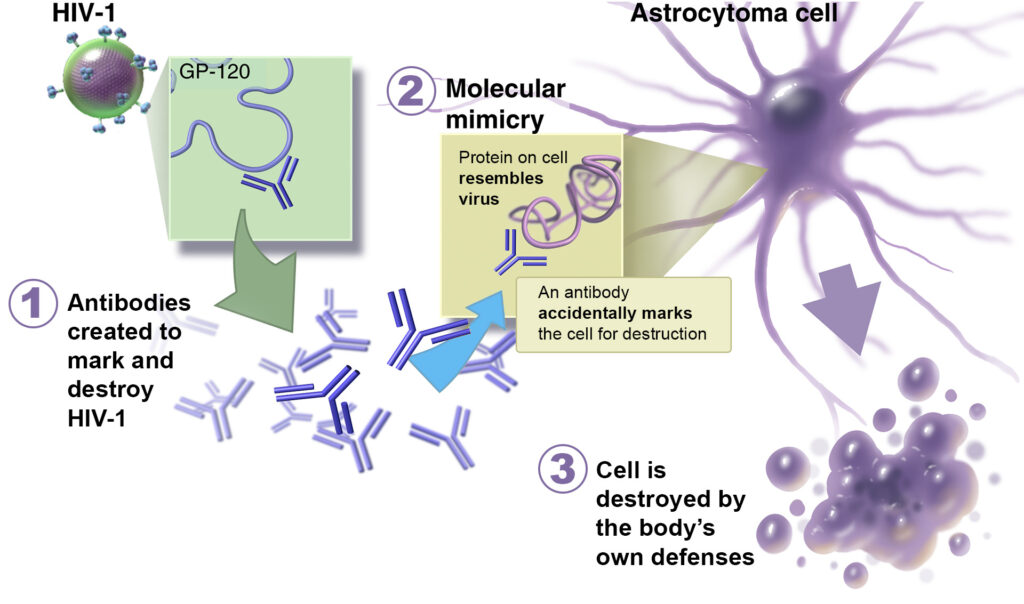Molecular Mimicry between the Human Immunodeficiency Virus Type 1 gpl20 V3 Loop and Human Brain Proteins.
When the immune system finds an AIDS virus (HIV-1), it floods the body with millions of antibodies. As these antibodies bump into the virus, they stick and tag it to be destroyed.
Dr. Trujillo discovered that some of the antibodies created to tag HIV-1 were also tagging people’s immune cells and cells in the brain. In his study, he found that one tiny part of the virus, where the antibody was sticking, was mimicking a tiny part of immune cells and brain cells. These antibodies that attach to viruses or people are called cross-reactive.
When cross-reactive antibodies tag parts of our bodies, the immune system mistakenly attacks itself. This war of the immune system against itself is called an autoimmune reaction. This battle creates inflammation that can damage the brain and spinal cord causing confusion and forgetfulness.
Vaccines help boost the creation of antibodies. Dr. Trujillo’s discovery helped to show that care had to be taken during vaccine development to avoid creating cross-reactive antibodies that might cause additional damage.


